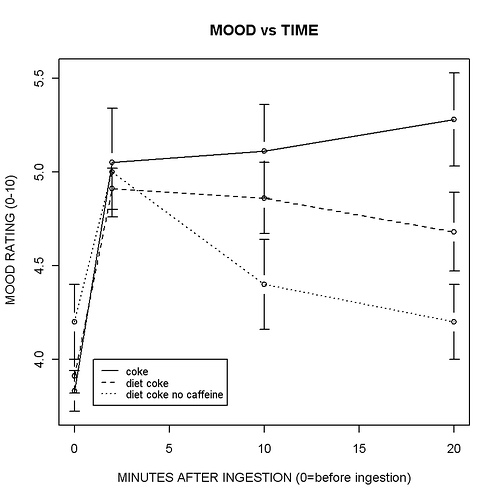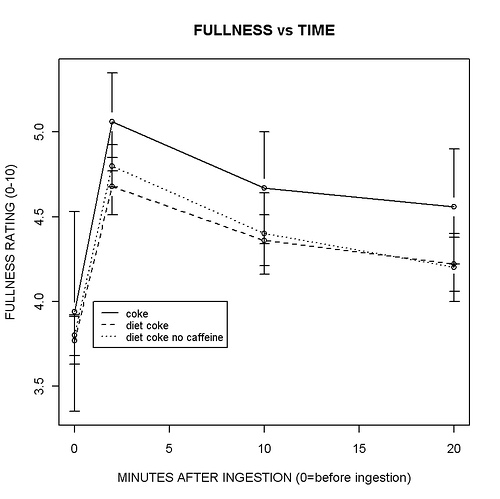TAUBES Kolata’s response to me reminds me a little of Mike Fumento’s response to me. Did you read that back-and-forth?
INTERVIEWER Yes. This is an example of the litmus test for who the good journalists are and who the bad journalists are. In your Berkeley talk, you quoted Jane Brody: “eating pasta is a good way to lose weight.” There seems to have been some sort of journalistic failure. What was the journalistic failure; what is it?
TAUBES Beginning in the 1960s, when newspapers institutionalized this idea of having diet and health/nutrition writers on newspapers, and its still the case, for the most part, today, the people who got those jobs weren’t the shining intellects on the newspaper, and the shining intellects didn’t want to be diet and health writers. If you’re a whip-smart young guy or girl who wants to go into journalism, you want to be an investigative reporter, a political reporter, or a war correspondent; you don’t want to write about diet and health. Or at least you didn’t. So I think that was one of the problems. You got not very smart people; truly mediocre reporters, doing jobs that turned out to have remarkable significance and influence. I do think that Jane Brody is as responsible as anyone alive for the obesity epidemic. She just bought into this idea of the low-fat diet as a healthy diet, and her sources in New York told her that Atkins was a quack, and that fat was bad, and she never questioned any of it. I don’t know if she had the intellectual wherewithal to do it. In any other field of reporting, as far as I know, reporters are supposed to be as skeptical of their sources as scientists are supposed to be skeptical of their data. Certainly, if George Bush tells a political reporter something, that political reporter doesn’t treat it like it’s true. He might faithfully report what George Bush said, but you’re supposed to be skeptical of what government institutions tell you. So now it’s 1977, the McGovern Committee and the USDA make these proclamations about what constitutes a healthy diet, and there’s simply no skepticism. (With the possible exception of Bill Broad writing in Science magazine, which no one outside the field of science was reading.) So the government tells us that we should eat low-fat diets — and not even learned authorities in the government, but Congressman and USDA bureaucrats channeling 30-year-old congressional staffers — and lo and behold, all these health reporters decide it must be true. That’s the failure. In my fantasy life, I get a call from the managing editors of the New York Times and the Washington Post and the Wall Street Journal and they say they’ve read my book and they want to know how they can improve their health and diet reporting. Because they can see, whether or not I’m 100% right, or 80%, or only 50%, surely their reporters did something wrong. Now there’s a fantasy for you.
INTERVIEWER Yeah, I agree. That makes sense. So, what would you say?
TAUBES I haven’t figured that one out yet. Get some of your political reporters to do the health writing. Get the smarter people on the paper to do it.
INTERVIEWER Well, I always thought of you as one of the very few science writers who was sufficiently skeptical. Practically none of them are.
TAUBES That’s basically the problem. This lack of skepticism. But I had an advantage. . . You’ll remember, in my first book, I got to live at a physics laboratory and I was lied to regularly by a Nobel Prize-winning physicist. His conception of truth was what he needed to be true at the moment, and what he could get people to believe. So if you called him on the lie, and he was kind of a charming fellow, he would acknowledge that he might have misled you, and then he would step back and try another lie, because it wasn’t in his best interest to tell the truth. Then I did this book on cold fusion where I spent three years, basically, getting lied to constantly by anyone who thought it was in their best interest. There was a period in my life where it was hard for me to trust anyone, because I’d just been around too many people who believed that the truth was what was convenient. I also knew, by the time I got into public health reporting, I knew what it took to do good science. So, if somebody wasn’t doing it, I knew there was no reason to put them on a pedestal. The first article I ever wrote for Science magazine was an investigative piece of an alleged fraud that had happened in the cold fusion episode — a fundamental result that kept the field alive for another few months couldn’t be explained by nuclear physics. That alone was so remarkable — as one of the smartest men in the world suggested to me, a physicist named Dick Garwin at IBM — that it should have made everyone suspect fraud. If something can’t be explained by a very well-tested theory, you would question the ethics of the researcher who did the work before you’d question the theory. This is Hume’s idea that eyewitness testimony is never good enough to make you believe in the existence of a miracle, because a miracle is, by definition, something that’s impossible, by all our accepted theories. It’s easier to believe that 10, 100, or 1000 people were deluded or dishonest then it is to believe that the Virgin Mary really did appear in Times Square or whatever your miracle of choice is. Anyway, I’m writing this story for Science about an alleged incidence of fraud that took place at Texas A&M, and the editor had a Master’s degree in mathematics from Texas A&M. He took it upon himself to call some of the professors I interviewed, and he would ask them if they really believed what I said they believed, which was not completely unreasonable, considering I’d never written for the magazine before. But then he would say to me, “Well, I talked to professor so-and-so, and he says he doesn’t believe what you said he believed”. And I would say, “Well, this is six months after the fact. Let’s go look at the lecture he gave six months ago, and here’s the paper he wrote on the lecture, and here’s the sentence where he says what he believed then, which is what we’re writing about.” And this editor’s response was “how could you question him? He’s a PhD, and you’re not.”
INTERVIEWER That’s rather unfortunate.
TAUBES This was around 15 years ago; it’s still one of those memorable moments in my life.
INTERVIEWER This guy was an editor at Science magazine?
TAUBES An editor for the journal Science.
INTERVIEWER Oh yeah — that’s really bad. Really, really bad.
TAUBES It’s a common response you see —- what right does Taubes have to say this stuff? He’s not a scientist. It’s like “The Wizard of Oz,” where in order to be a scientist or be taken seriously in science, somebody has to first give you the piece of paper?
INTERVIEWER On a scale of sharpness of criticism, from one to a hundred, that ranks about a zero.

